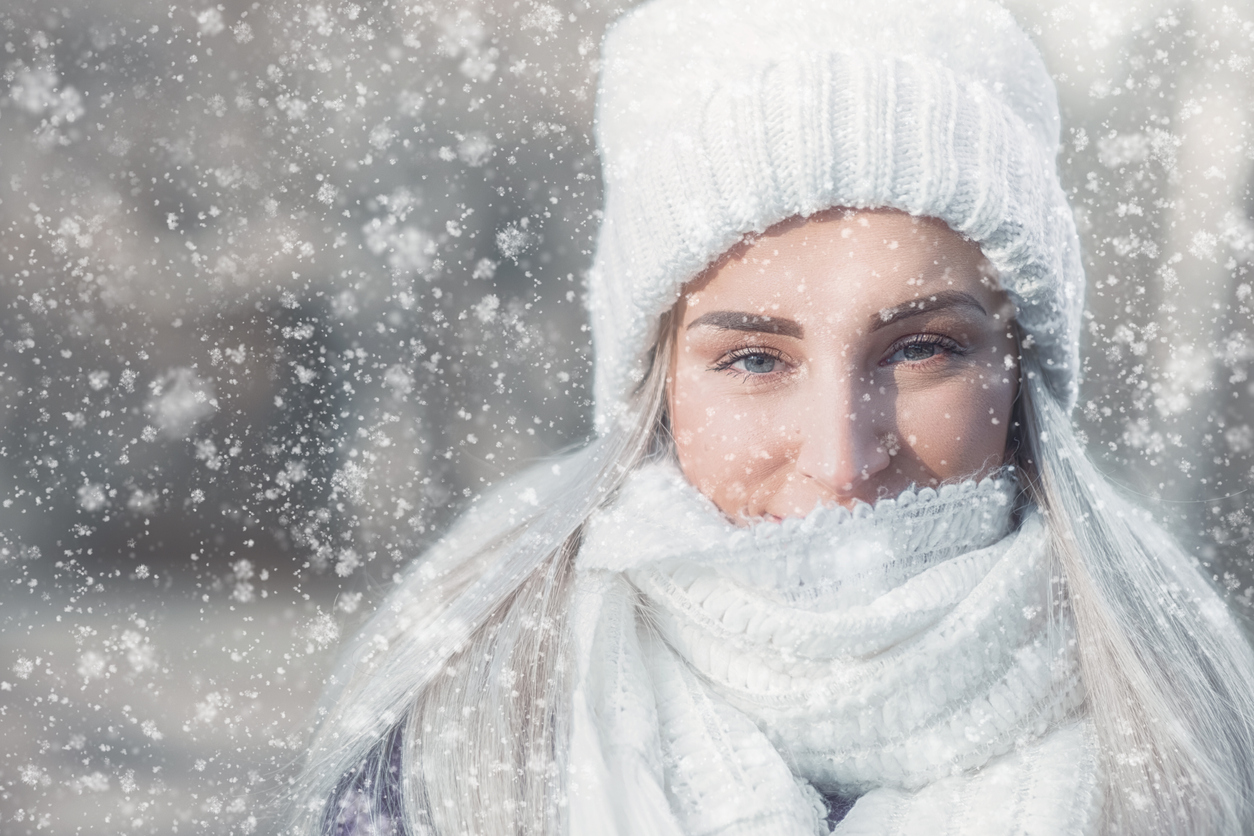
As the temperatures drop and winter takes hold, it’s not just the cozy sweaters and hot cocoa that become essential. The cold weather can wreak havoc on your skin, leaving it dry, irritated, and prone to various issues. Let’s delve into the ways in which chilly temperatures can harm your skin and explore effective strategies to keep it healthy and radiant during the winter months.
1. Dehydration and Dryness
One of the primary challenges that cold weather poses to your skin is dehydration. Cold air lacks humidity, and when combined with indoor heating, it can strip your skin of its natural moisture. This results in dry, flaky skin that can become tight and uncomfortable. Dehydrated skin is not only aesthetically displeasing but can also lead to the exacerbation of fine lines and wrinkles.
2. Windburn
The biting winds that accompany cold weather can cause windburn, a condition where the outer layer of the skin becomes irritated and inflamed. Windburn is characterized by redness, chapping, and in severe cases, it may even lead to peeling. Exposed areas like the face and hands are particularly vulnerable, and if not addressed promptly, windburn can compromise the skin’s protective barrier.
3. Worsening of Skin Conditions
For individuals with existing skin conditions such as eczema or psoriasis, cold weather can exacerbate them. The dry air can trigger flare-ups, causing discomfort and sometimes leading to more severe symptoms. It’s crucial for those with pre-existing skin conditions to take extra precautions during the winter months to manage and minimize the impact of cold weather on their skin.
4. Cracked and Chapped Lips
Your lips are often the first to bear the brunt of cold weather. The delicate skin on the lips lacks oil glands, making it susceptible to dryness and cracking. Constant exposure to chilly winds can leave your lips chapped and painful. Ignoring this issue can lead to more severe conditions, such as bleeding and infections.
5. Rosacea Flare-ups
Rosacea, a common skin condition characterized by redness and visible blood vessels, can be triggered or worsened by cold weather. The abrupt changes in temperature, especially moving from the cold outdoors to a heated indoor environment, can lead to flare-ups. Managing rosacea during winter involves a combination of protective measures and skincare routines tailored to the specific needs of individuals with this condition.
Protecting Your Skin: Tips and Strategies
Now that we understand the potential harm that cold weather can inflict on our skin, let’s explore practical ways to protect and nourish it during the winter months.
- Hydration is Key Combat dryness by staying well-hydrated. Drink plenty of water throughout the day, and consider using a humidifier in your home to add moisture to the air.
- Invest in a Quality Moisturizer Choose a rich, hydrating moisturizer to create a protective barrier on your skin. Apply it immediately after showering or washing your face to lock in moisture.
- Don’t Forget the Sunscreen Even in winter, UV rays can be damaging. Apply a broad-spectrum sunscreen to exposed areas, especially the face, to shield your skin from the sun’s harmful effects.
- Bundle Up Wear protective clothing, such as scarves, gloves, and hats, to shield your skin from harsh winds and cold temperatures. This is particularly important for individuals with sensitive skin.
- Adapt Your Skincare Routine Consider adjusting your skincare routine to include products that focus on hydration and nourishment. Use a gentle cleanser, and incorporate hydrating masks or serums into your regimen.
For more ideas check out our post How To Prepare Your Skin For Cooler Weather.
As winter casts its chilly spell, understanding the potential harm it can cause to your skin empowers you to take proactive steps in maintaining its health and vitality. By incorporating these tips into your winter skincare routine, you can safeguard your skin from the adverse effects of cold weather and ensure a radiant and healthy complexion throughout the season. Embrace the winter wonderland, but not at the expense of your skin’s well-being.
